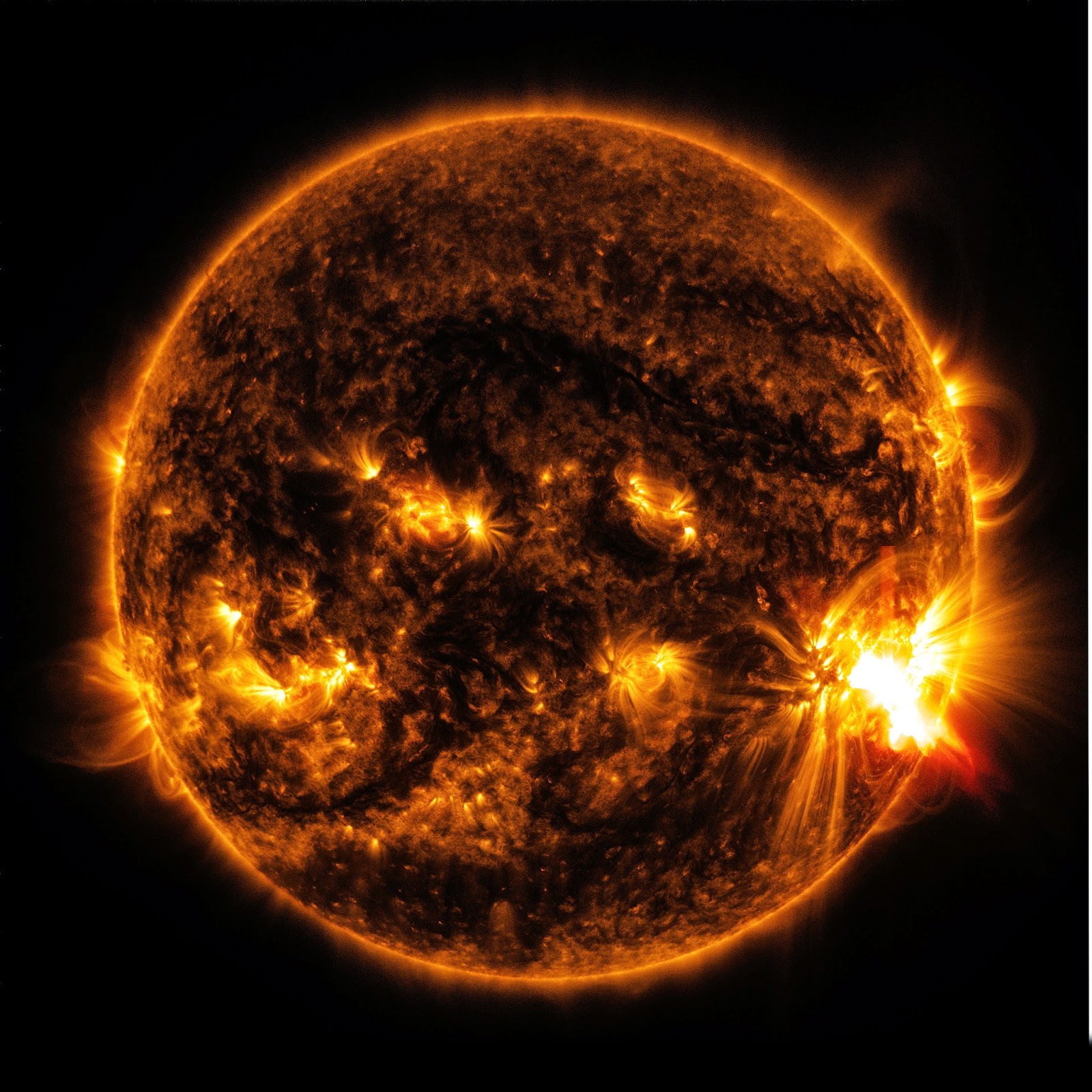
Sun is in a real solar flare frenzy recently, continuing a week's worth of substantial flares beginning on Oct.19, 2014. It emitted two mid-level solar flares on Oct. 26 and Oct. 27. The first peaked at 8:34 pm EDT, and the second peaked almost 10 hours later at 6:09 am EDT. The first flare was classified as an M7.1-class flare. The second flare was a bit weaker, classified as an M6.7-class. The series of flares over the course of the previous week all erupted from a particularly large active region on the sun, labeled AR 2192 – the largest seen on the sun in 24 years. Also today, the active region on the sun erupted with another X-class flare - its fourth since Oct. 24. The strong X2 flare peaking at 10:47 am EDT, ionized the top of Earth's atmosphere and caused a strong HF radio blackout over the Atlantic Ocean basin as well in South America and western Africa. The blackout started at 10:15 am EDT and lasted for about an hour. The flares will probably create auroras visible at high latitudes such as Canada and Alaska.
Region 2192 has now produced a total of 23 M-class solar flares (R1-R2 Radio Blackout) and 6 R3 Radio Blackouts and remains capable of producing yet more activity. Strong radio blackouts are expected over the next three days due to the region's persistent activity.
Solar flares are powerful bursts of radiation. Harmful radiation from a flare cannot pass through Earth's atmosphere to physically affect humans on the ground, however - when intense enough - they can disturb the atmosphere in the layer where GPS and communications signals travel.
M-class flares are one tenth as strong as X-class flares, which are the most intense flares. The number provides more information about its strength. An M2 is twice as intense as an M1, an M3 is three times as intense, etc.
Strong flares are usually accompanied by massive coronal mass ejections (CMEs) - billion-ton clouds of electrified gas that billow away from the blast site. So far, however, none of the eruptions from AR2192 has produced a major CME. Without a series of CMEs to hit Earth and rattle our planet's magnetic field, there have been no geomagnetic storms nor any widespread auroras.





Comments